Wizardry: The Five Ordeals offers an endless challenge for the dedicated dungeon crawler
My first experience with Wizardry: The Five Ordeals set the tone for what was to follow. Approximately thirty seconds after entering the dungeon, IRyS from Hololive fell down a pit and immediately died. Then, while attempting to carry her body back to the surface, the rest of the party was attacked by “ill-bred men” and Amelia Watson was stabbed to death.
Thankfully, the dwindling party managed to survive, and had just about enough money saved up to pay to resurrect them both, so they handed over the 500 gold to the priest and waited. IRyS was restored to life with no issue, but the ritual failed for Amelia Watson, and her body became naught but a pile of ashes.
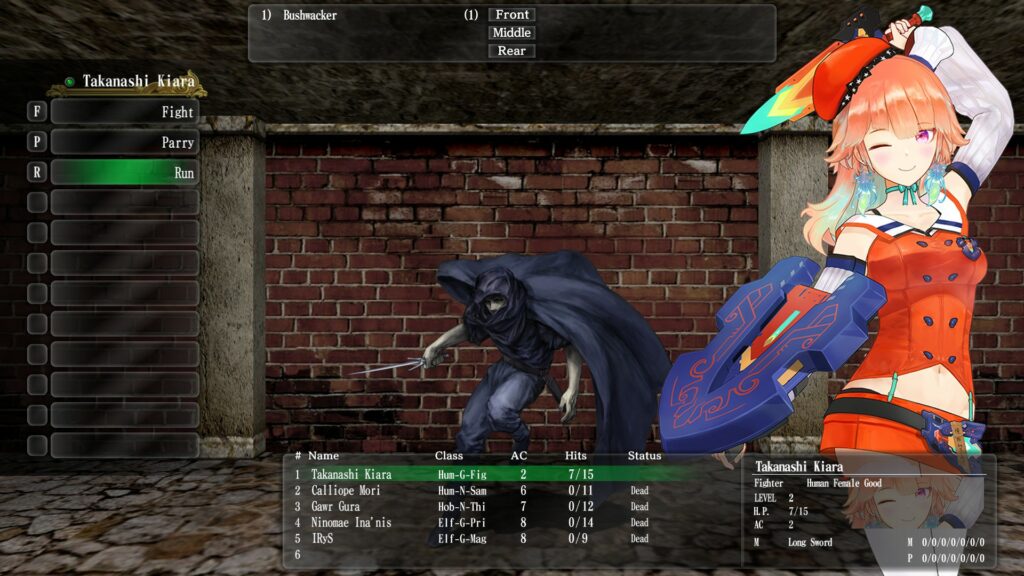
Wizardry: The Five Ordeals is a brutally old-school dungeon crawler, in which your party of adventurers very much has to prove themselves before being able to get particularly far in their explorations. I will say up front that this absolutely will not be an experience that will appeal to everyone — but if you’re on board for a game that will give you some absolutely wonderful war stories, you’ll want to give this a go.
Wizardry: The Five Ordeals originally released in Japan back in 2006. As the title suggests, it’s part of one of the world’s longest-running RPG series (the one that isn’t Ultima), and one that helped to define and codify the conventions of the dungeon-crawling “gridder” subgenre in particular. The history of the Wizardry series is actually somewhat complex, with it beginning life as a western series for home computers, but proving so popular in Japan that it ended up as a Japanese-owned property.
Technically Wizardry: The Five Ordeals is part of the “Wizardry Gaiden” offshoot series, and indeed the game’s Steam store page is keen to make a point that it is not related in any way to the first five Wizardry games (or, presumably, the sixth, seventh and eighth installments). Instead, it was designed as a game that made use of the conventions and mechanics of the Wizardry series, but which also allowed players to create their own scenarios.
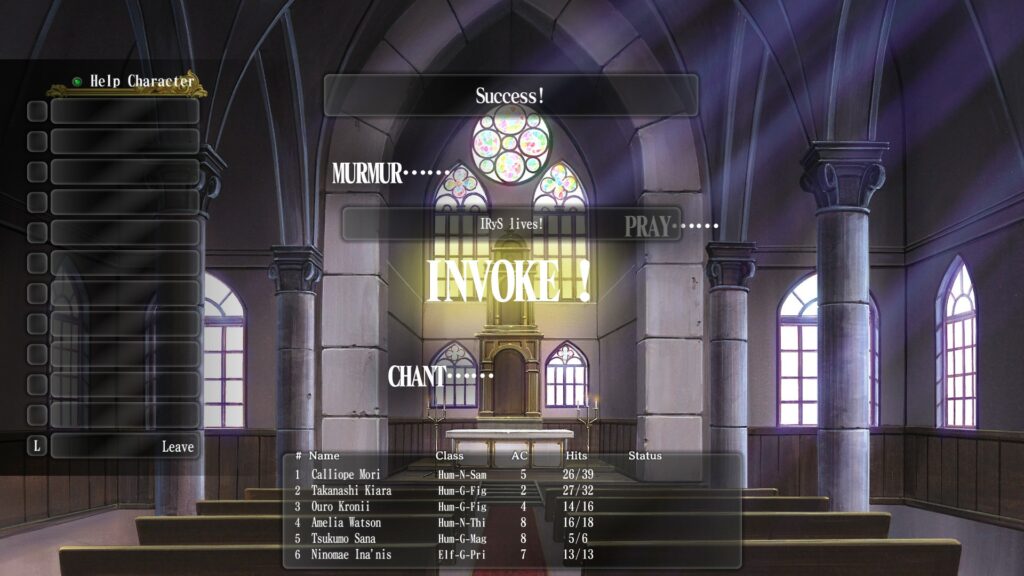
Developer Kaneda Tsuyoshi, who had previously worked on the Wizardry Gaiden titles for Game Boy, was initially resistant to this idea, believing that adding in the ability for players to create their own game content would make it impossible for them to release a sequel at a later date. He later relented, though — and, moreover, correctly assuming that not everyone who picked the game up would want to make their own scenarios, decided to include five official modules for players to enjoy from the moment they first fired up the game.
Wizardry: The Five Ordeals was originally designed for Windows 98 machines, and was never updated to run on later operating systems. The game’s community remained enthusiastic about it, however, and continued supporting it on an unofficial basis. In 2017, developer Tokunaga Tsuyoshi decided that enough was enough, and that he’d completely rebuild the game in the popular Unity engine so that it would work properly on modern computers.
As of August 2022, that Unity port of Wizardry: The Five Ordeals, which is available via Steam’s Early Access programme, is now available in English, with all five official scenarios fully translated and ready to play. The scenario editor is not yet ready, but a wide variety of user-created modules (some of which are in English, but most of which are Japanese) are available to play, too, making for a whole lot of Wizardry fun that is ready to enjoy right now, even if you can’t yet make your own.
The English support in Wizardry: The Five Ordeals is probably best described as “functional” rather than “good” — there’s some rather odd phrasing here and there that suggests there might have been a touch of machine translation going on — but for the most part the game is easy to parse and work out, particularly if you’re already familiar with the conventions of the genre. And in some respects the clunky translation feels charmingly authentic to the game’s 2006 origins.
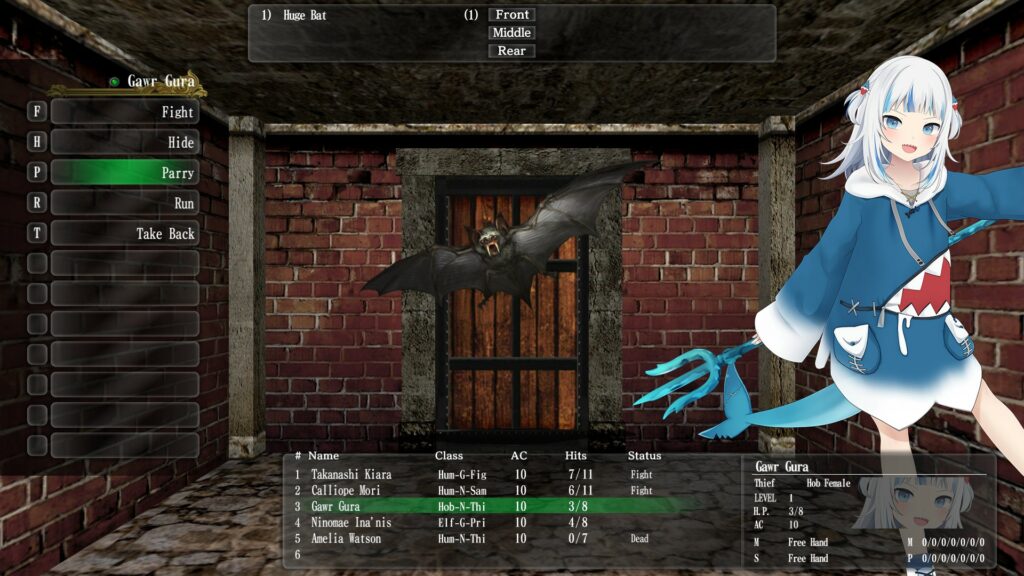
In Wizardry: The Five Ordeals, each scenario gives you a basic setup that provides your justification for delving into the dungeon of the hour. Bear in mind that while each scenario does have some story content, this is primarily a mechanics-centric experience — so don’t come into Wizardry: The Five Ordeals expecting a cinematic masterpiece of storytelling.
Once you know what you’re supposed to be doing, you’re able to assemble a party from a group of predefined characters available at the Tavern, or visit the Training Grounds on the edge of town to create your own.
Creating characters in Wizardry: The Five Ordeals involves picking a name, gender, race, alignment and class, and then assigning randomly rolled bonus points to your character’s statistics. There can be absolutely huge variation in these bonus points, and part of the fun of Wizardry is seeing how different characters can cope with the challenges ahead of them. Sure, you can repeatedly re-roll in order to try and get the “best” stats, but in practice all characters are going to struggle a bit in the early hours.
When creating a character, you can customise their “mark”, which is the set of graphics that are used to represent them on screen and in menus. By creating .png files of the appropriate size and shape (the definitions of which are provided in the official game FAQ, along with some template files) you can add your own character art to the game. And yes, it can be absolutely anything you want; with Wizardry: The Five Ordeals being an offline game you don’t need to worry about copyright or being banned for anything which might be considered “offensive”. Go wild.
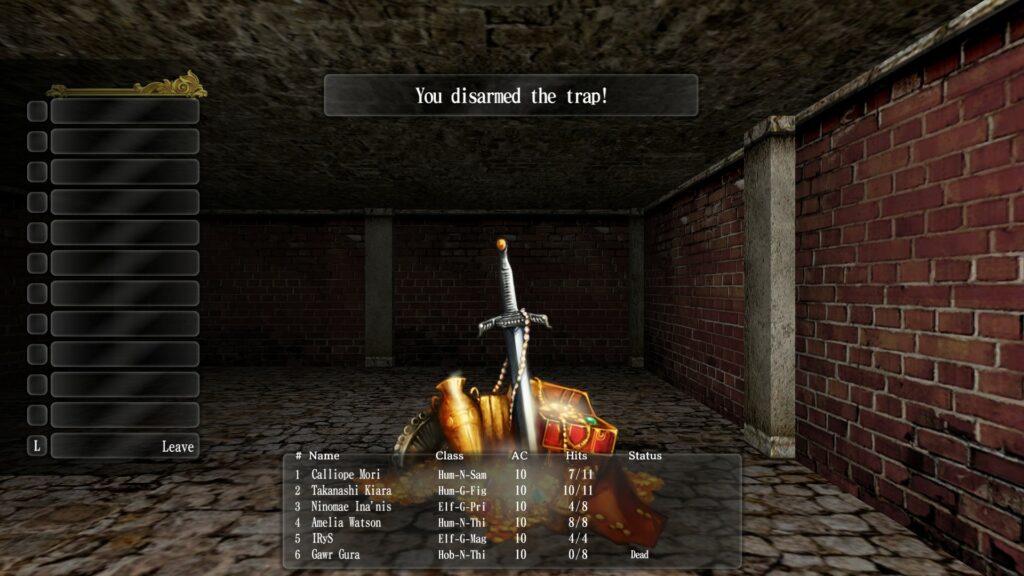
Each character starts with a small allowance of gold, which can be used to equip them with some basic gear. Following the conventions of classic old-school RPGs, characters each have the ability to carry gold by themselves, but the party’s money can be pooled to make buying things more practical.
You can also game the system a bit by creating extra characters purely to get their initial gold allowance — and indeed in your early hours with the game, it’s worthwhile creating roughly twice as many characters as you think you might need for the inevitable “death runs”.
Once you’ve assembled a party of up to six members, you can head to the dungeon and arrange them into two rows of up to three each. The front row will be your primary attackers, while the back row is best saved for squishy mages, priests and those with ranged weapons. Exploration unfolds from a first-person perspective, and movement is by the standard grid-based formula.
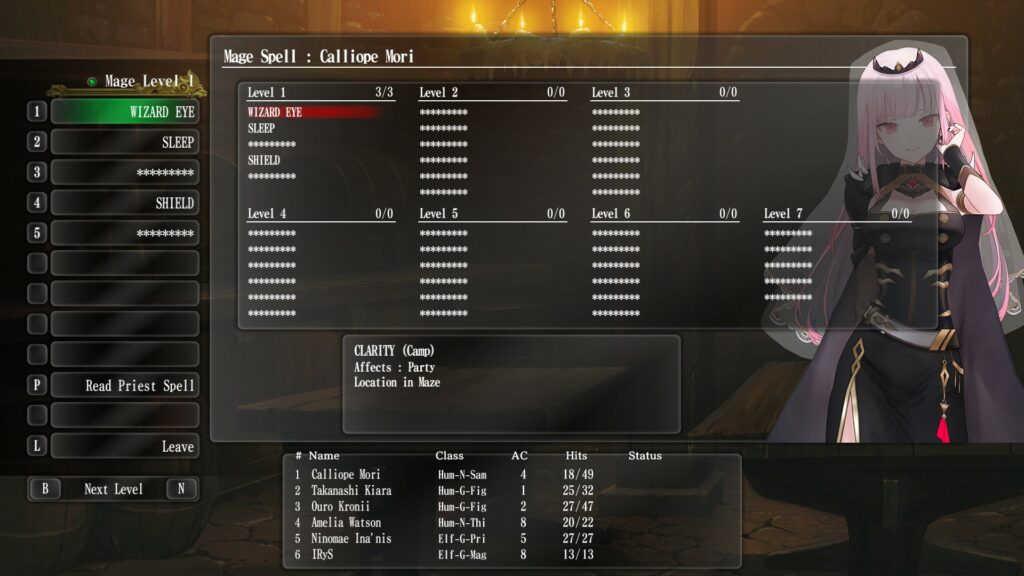
Notably, each scenario in Wizardry: The Five Ordeals has its own twist on the game’s overall ruleset, meaning that not every scenario features an automap facility. That means you’ll probably want to have a pad of graph paper by your side while you explore, otherwise you will very quickly find yourself getting lost. There is a spell you can cast that reveals the dungeon map even in scenarios with no automap feature, but you’re still best off mapping it by hand.
Unlike many modern dungeon crawlers, fully random encounters in Wizardry: The Five Ordeals are relatively rare. Instead, the vast majority of combat encounters you’ll come across will occur when you step through a door into a new room. This somewhat predictable aspect of the game can be used to your advantage when grinding for experience and gold, since you can head right to a convenient door, beat up on some enemies and then head right back to the surface to catch your breath.
For those accustomed to more modern RPGs — particularly Asian-style titles — this will be a bit of an adjustment, but it’s an essential part of the Wizardry: The Five Ordeals experience. You absolutely will not be able to delve very far into the dungeon to begin with, and there is no shame whatsoever in retreating after just one or two battles to lick your wounds and let your casters have a nap to recover their spells. So long as you approach this initial part of the game cautiously and carefully, your characters will level up and have much more survivability relatively quickly — and from there things really get moving.
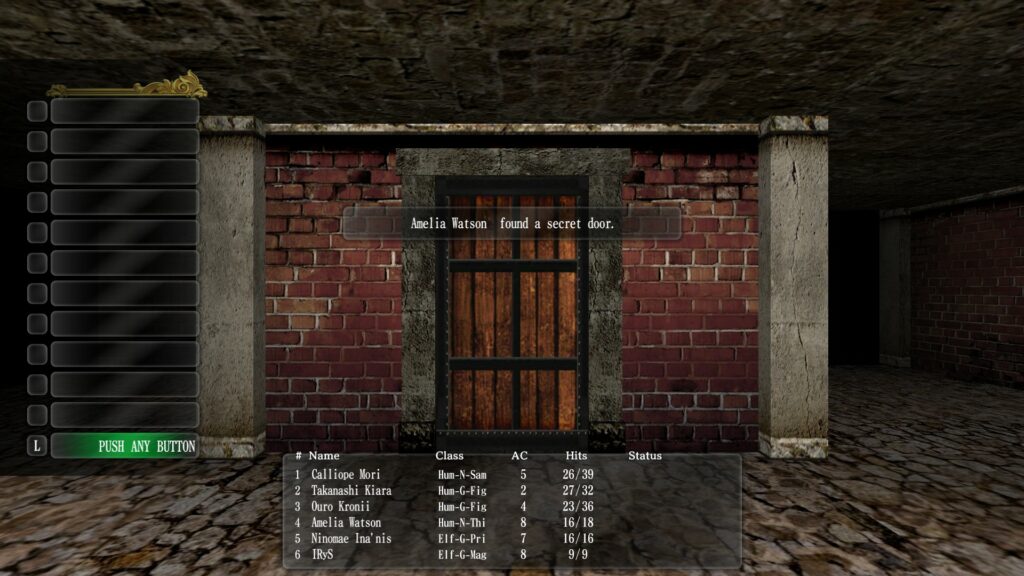
Like the classic Wizardry titles, Wizardry: The Five Ordeals is primarily presented in a very abstract manner. Interactive elements in dungeons tend to be represented as things like “pads” on the floor, and you often don’t know exactly what these represent until you step on them. Sometimes they’ll be a trap — as poor IRyS discovered — while at other times they may be things you can interact with, or locations that help advance the overall story.
Combat in Wizardry: The Five Ordeals is round-based, with everyone choosing the actions they’re going to take and these then being resolved according to invisible initiative rolls and adjustments based on stats. You’ll typically find yourself facing multiples of the same enemy at once, and the convention of the Wizardry series is that individual members of a group like this can’t be targeted independently; you simply bash your way through them one at a time, sometimes revealing variations on the foe type as you reach the end of a horde.
The classes are nicely varied in terms of what they can do. Fighters, as you might expect, are primarily concerned with either attacking or parrying incoming blows, for example, while the Samurai is able to learn mage spells as they level up as well as being a frontline attacker. Thieves can attempt to hide in order to ambush and backstab enemies, while mages and priests can cast spells of the relevant type if the circumstances are correct and they have enough “charges” remaining.
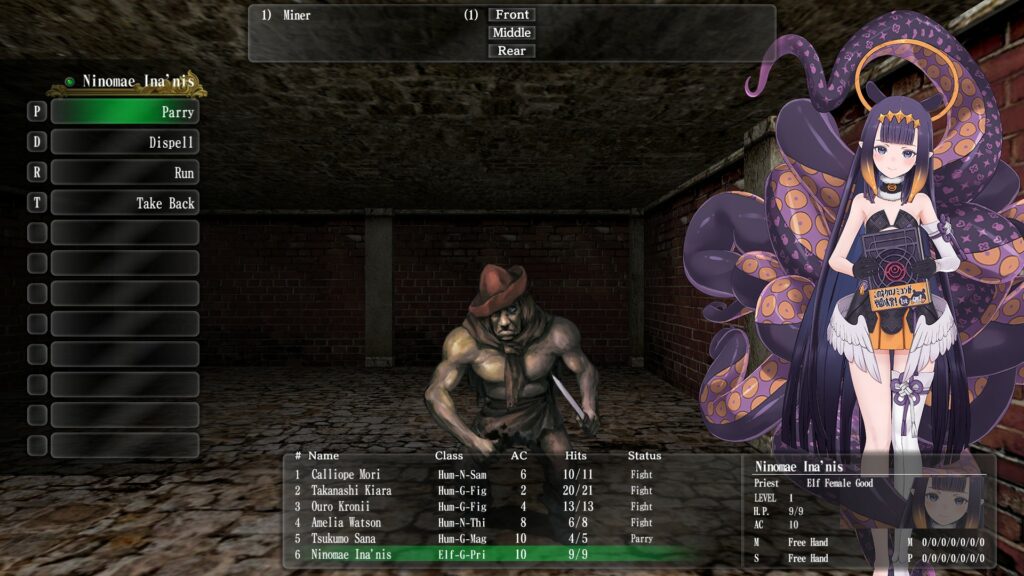
Magic uses a Dungeons & Dragons-esque Vancian system, whereby spells are divided into levels (which are different from character experience levels), and casters have a set number of casts per level that can be replenished by resting. Unlike D&D, characters don’t need to memorise specific spells beforehand; Wizardry casters work more like the D&D Sorcerer class, where they can cast any spell from a level so long as they have enough casts remaining for that level.
An interesting consideration that you have to bear in mind while playing Wizardry: The Five Ordeals is character age. As the game progresses, characters will grow older, with their age increasing as they stay at the inn and encounter stressful situations. Once past the age of 40, their stats will actually start to decline (don’t I know it) and if their Vitality stat drops below 3 on a level up, they will actually drop dead of old age. This might not be an issue in shorter scenarios, but you’ll want to bear it in mind for longer adventures!
Make no mistake, Wizardry: The Five Ordeals is a relentlessly and unashamedly punishing game that will absolutely kick you right in the bottom repeatedly when you first start playing — to such a degree that you may well find yourself wondering if it’s even possible to progress. But play patiently, cautiously and carefully and you’ll be able to scale that initial difficulty wall — and you’ll find that things actually become a lot more manageable with just a little character progression.
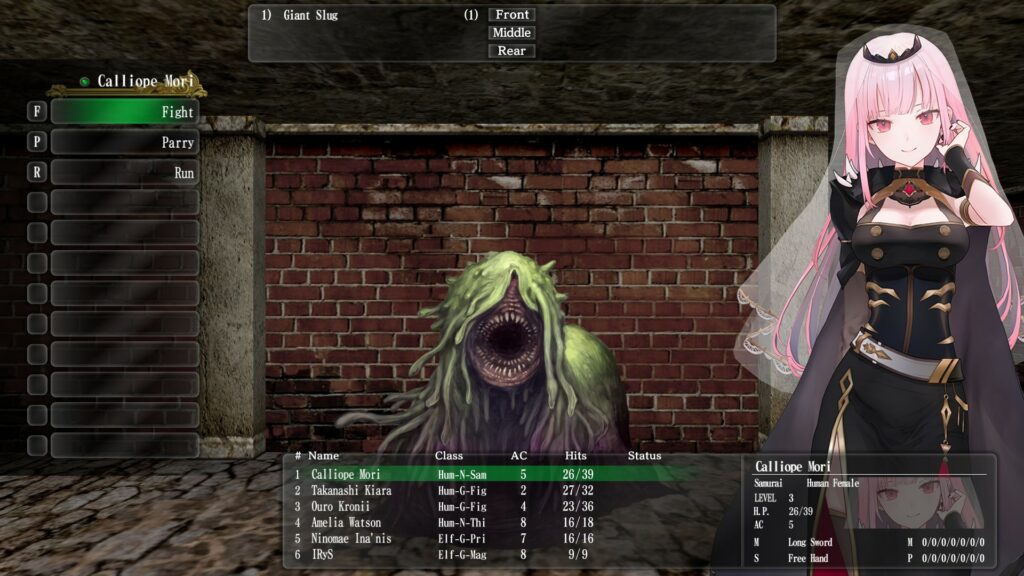
Not everyone is up for that kind of experience, I know, so do be aware of this if you’re considering jumping in. While dungeon crawlers in general are somewhat notorious for being quite difficult up front, nothing from the modern Japanese console DRPG sector quite compares to how brutal Wizardry: The Five Ordeals can seem in its opening moments.
So long as you’re prepared for this, you’ll have a great time with the five included scenarios, which should probably keep you busy for several hundred hours between them.
And once that scenario editor is released — and perhaps some more popular user-made scenarios are translated into English — there’s potentially limitless dungeon-crawling fun on offer right here, making Wizardry: The Five Ordeals a fantastic investment for those who like nothing more than getting the graph paper out and splattering some monsters across the nearest wall.
Wizardry: The Five Ordeals is available now for PC via Steam. Thanks to the developers for the review code.
Join The Discussion
Rice Digital Discord
Rice Digital Twitter
Rice Digital Facebook
Or write us a letter for the Rice Digital Friday Letters Page by clicking here!
Disclosure: Some links in this article may be affiliate links, which means we may earn a small commission if you make a purchase after clicking on them. This is at no additional cost to you and helps support Rice Digital!
- Letter from the Editor: passing the torch - June 30, 2023
- Super Woden GP 2 is looking promising - June 30, 2023
- Inti Creates is making a 32 bit-style Love Live action platformer - June 26, 2023






